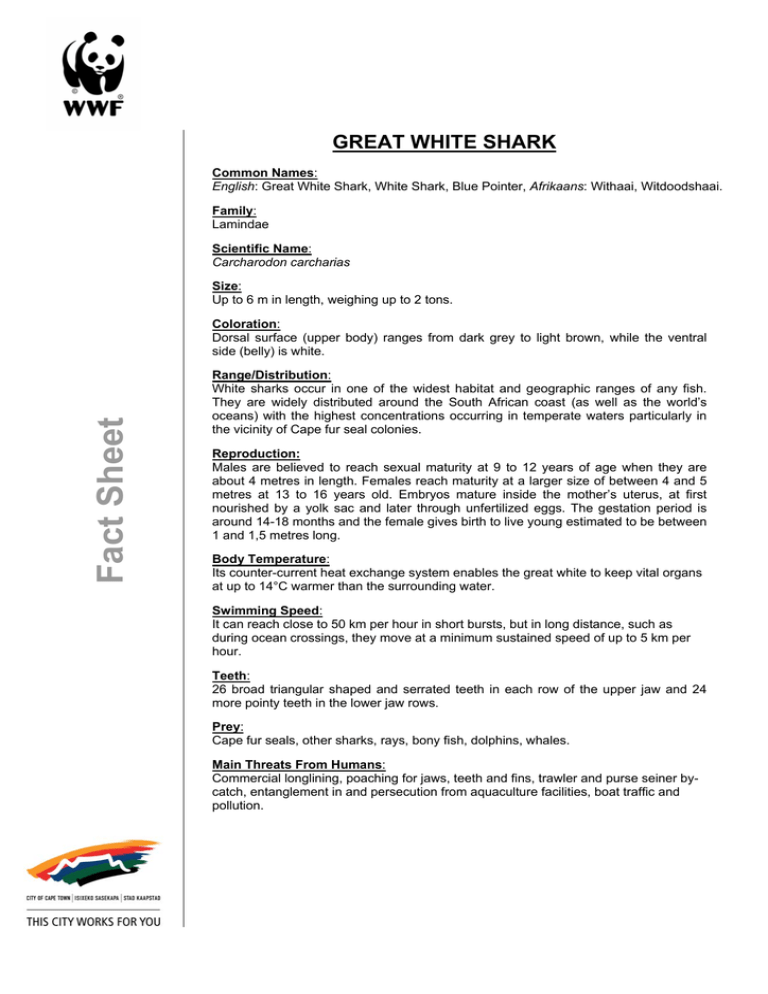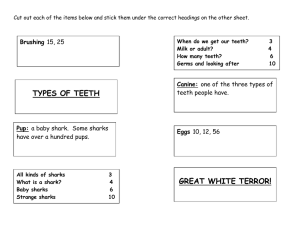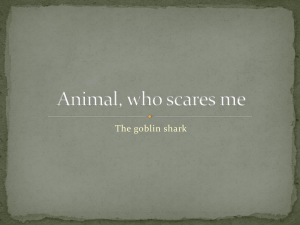GREAT WHITE SHARK
advertisement

GREAT WHITE SHARK Common Names: English: Great White Shark, White Shark, Blue Pointer, Afrikaans: Withaai, Witdoodshaai. Family: Lamindae Scientific Name: Carcharodon carcharias Size: Up to 6 m in length, weighing up to 2 tons. Fact Sheet Coloration: Dorsal surface (upper body) ranges from dark grey to light brown, while the ventral side (belly) is white. Range/Distribution: White sharks occur in one of the widest habitat and geographic ranges of any fish. They are widely distributed around the South African coast (as well as the world’s oceans) with the highest concentrations occurring in temperate waters particularly in the vicinity of Cape fur seal colonies. Reproduction: Males are believed to reach sexual maturity at 9 to 12 years of age when they are about 4 metres in length. Females reach maturity at a larger size of between 4 and 5 metres at 13 to 16 years old. Embryos mature inside the mother’s uterus, at first nourished by a yolk sac and later through unfertilized eggs. The gestation period is around 14-18 months and the female gives birth to live young estimated to be between 1 and 1,5 metres long. Body Temperature: Its counter-current heat exchange system enables the great white to keep vital organs at up to 14°C warmer than the surrounding water. Swimming Speed: It can reach close to 50 km per hour in short bursts, but in long distance, such as during ocean crossings, they move at a minimum sustained speed of up to 5 km per hour. Teeth: 26 broad triangular shaped and serrated teeth in each row of the upper jaw and 24 more pointy teeth in the lower jaw rows. Prey: Cape fur seals, other sharks, rays, bony fish, dolphins, whales. Main Threats From Humans: Commercial longlining, poaching for jaws, teeth and fins, trawler and purse seiner bycatch, entanglement in and persecution from aquaculture facilities, boat traffic and pollution.











